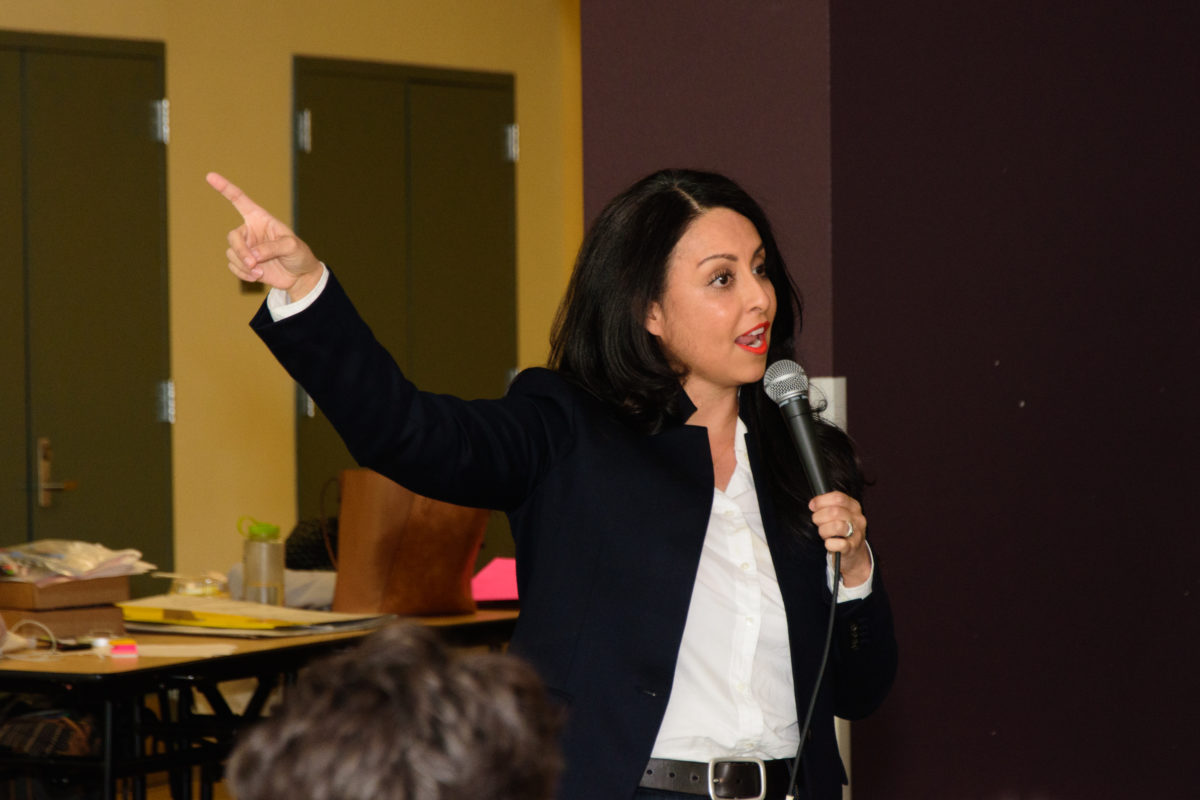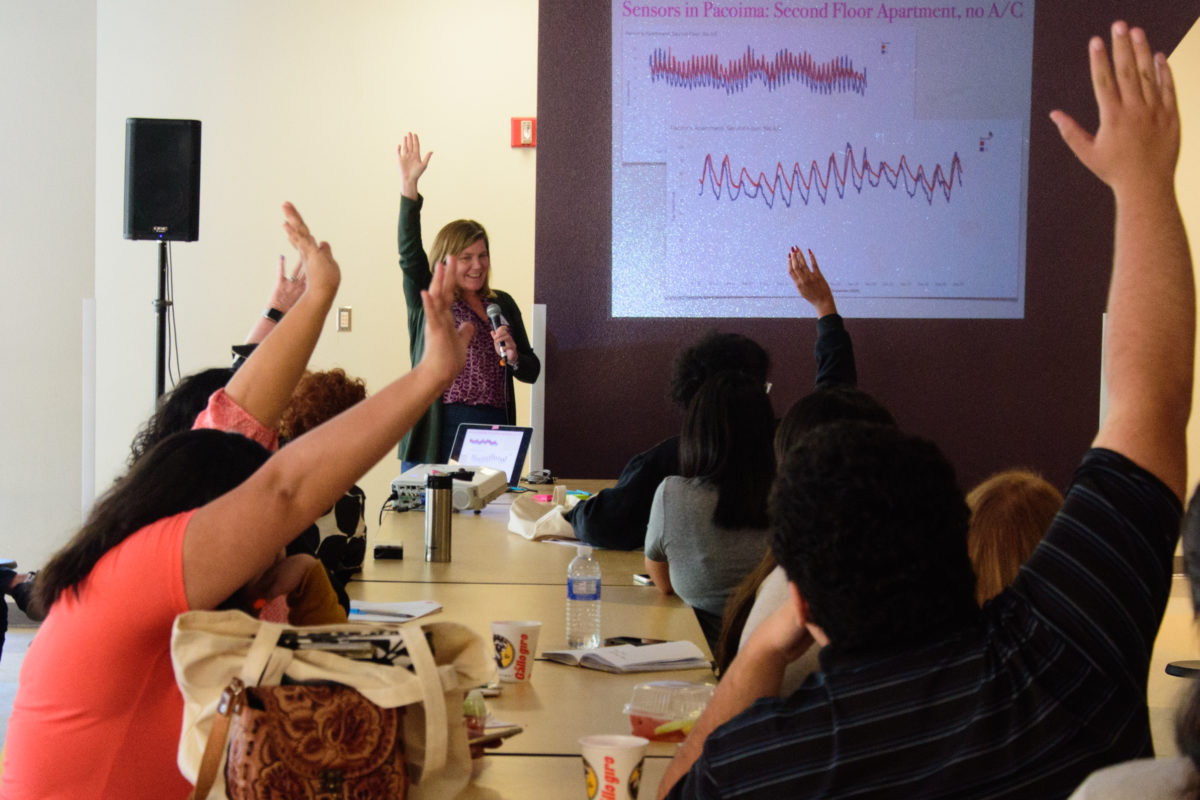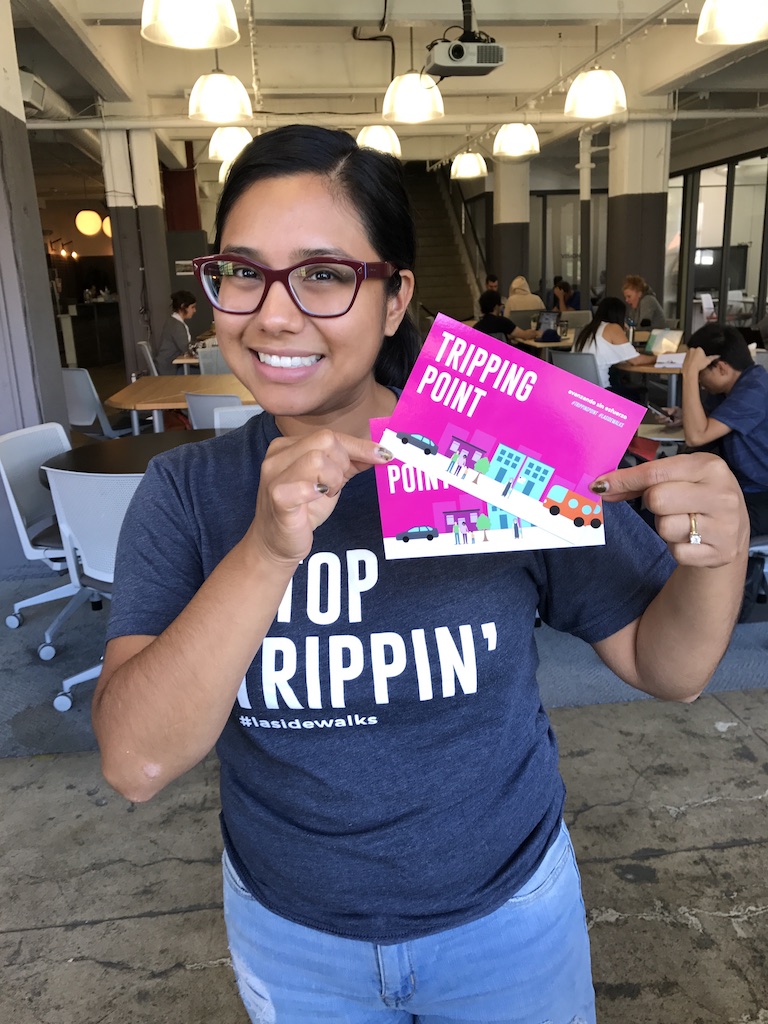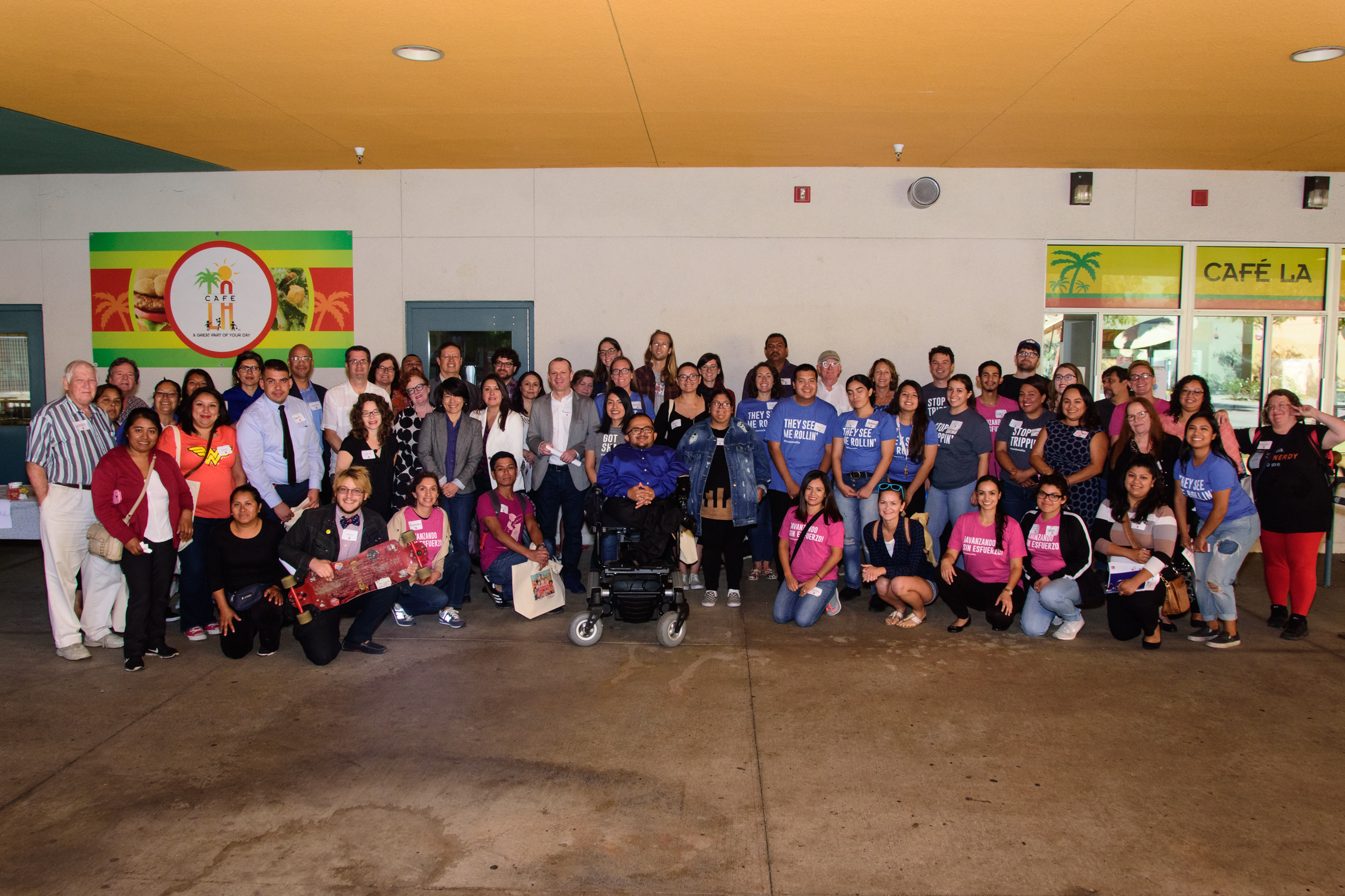On Saturday, October 21st, Panorama High School was host to the second Tripping Point: the Valley Edition. With over 60 community members, five neighborhood councils, and our special year 0-5 crew joining, the day was filled with ways to gain skills in advocacy, local civic engagement, and how to access the basic city service of good, accessible sidewalks.
From childcare with First Steps Mobile and intrepretation with Antena, as well as a local street vendor for “frutas frescas” – the Tripping Point is committed to meeting community members where they are. The Valley is home to the Orange Line, one of the most effective bus rapid transit lines in the country. Because all bus riders are pedestrians, the Valley is also home to the most dangerous intersections in the state of California.
In the Valley, the need is great as well as the demand for accessible and safe sidewalks.
Sidewalks are multi-faceted and encompass more than safety and accessibility, but also urban greening and public health. Our steering committee included Koreatown Youth Community Center, Los Angeles Walks, LURN, Outfront/JCDecaux, AARP Los Angeles, American Heart Association, Empower LA, and the Southern California Resource Center for Independent Living.
Keynoting our day were Hector Ochoa, Los Angeles County Disability Commissioner, Luz Rivas, Board of Public Works Commissioner, Ted Bardacke, Mayor Eric Garcetti’s Director of Infrastructure, and Councilmember Nury Martinez, Los Angeles City – District 6.
Hector, a steering committee member, shared his personal experience in addressing the shortcoming of the city’s ability to respond to ADA access requests.
“I’m not disabled by my physical capabilities, but by the society around me.” -Hector Ochoa#TrippingPoint #LAsidewalks pic.twitter.com/KKiI7KGkmI
— Investing in Place (@InvestinPlace) October 21, 2017
As the City of Los Angeles works to be compliant with the Willits settlement, the backlog of ADA access requests is only the “tripping point”. Ever month, there are over 100 requests sent to the Sidewalk Repair Program. The City has averaged fixing 70-80 sidewalks a year. If you were to send a request in today – it is likely that you will be waiting for two years minimum.
Luz Rivas, a Valley native, shared that the City is extremely committed to addressing the needs.
“There are people in City Hall who care very much about the Valley. We’re here to support you.” -Luz Rivas, Commissioner of Public Works pic.twitter.com/dqOI3yQSp0
— Investing in Place (@InvestinPlace) October 21, 2017
Ted Bardacke, Director of General Infrastructure, noted that sidewalks are key to connecting our communities with every day resources.
The Sidewalk Repair Program is an opportunity for the City of Los Angeles to address its most basic quality-of-life infrastructure. Safe and comfortable sidewalks and crosswalks serve all travelers, improve local economy, and can create vibrant public gathering spaces.
Rather than treated as separate from streets and transit, planning and funding sidewalks should be considered part of a comprehensive transportation network . We look forward to a future where our city is connected by a robust sidewalk and crosswalk network with ample shade and amenities, access to transit with safe and dignified bus stops, patrons connected to commercial and cultural destinations, stormwater runoff treatments, and safe passage for travelers of all ages and abilities.
“Sidewalks allow us to get to the places we want to be.” -Ted Bardacke, Director of Infrastructure#TrippingPoint #LAsidewalks pic.twitter.com/HZYgcizLh5
— Investing in Place (@InvestinPlace) October 21, 2017
Community members were then able to choose from a variety of tools being offered:
Morning Session
- Sidewalks 101 – Investing in Place
- Trees in Your Neighborhood – Koreatown Youth Community Center
- Advocacy Made Easy: How to Get What You Want – Los Angeles Walks
- Neighborhood Councils 101 – Empower LA
Afternoon Session
- How to Communicate with Decisionmakers – LURN
- The City’s Plan to Make Sidewalks Safe and Accessible – Bureau of Engineering/Department of Disability
- People Street – Great Streets
- Hands-On Walk Audit Training – Los Angeles Walks
Consistently drawing larger crowds are Los Angeles Walks’ Advocacy Made Easy and LURN’s How to Communicate with Decisionmakers. Community members are the experts of their communities. They are seeking for the “how-to’s” to advocate for themselves and make their voices heard.
A longtime advocate people having a safe and walkable sidewalk is Councilmember Nury Martinez. On her turf, the Councilmember was fired up and proud to host the Tripping Point in her district. Stemming from her own experience watching her father take public transportation every day of his career, sidewalks are an extremely personal issue.

“It is my responsibility as your Councilmember – if Hollywood and Highland can get zero fatalities with a pedestrian scramble – what’s the difference between Hollywood and Panorama City?” Safety and pedestrian lives are a critical component to bringing transportation equity to the Valley.
Another factor the Valley is known for is its extreme heat during the summer. Molly Peterson, an environmental journalist, shared her urban heat mapping work with the community members just down the street in Pacoima. The group was able to contribute more data points and demonstrate which streets experience the most heat and are in need of bus shelters.

One of the key takeaways we had from our first Tripping Point in Boyle Heights was ensuring we had concrete next steps. Community members wanted their decisionmakers to know that they were ready to fight for their sidewalks. We were inspired to create postcards and send our concerns to our city representatives.

If you would like to join us in our campaign for #LAsidewalks, please join our work group ‘Completing Streets: Fixing City of LA Sidewalks’ or feel free to reach me at amanda@investinginplace.org.
Resources:









You must be logged in to post a comment.